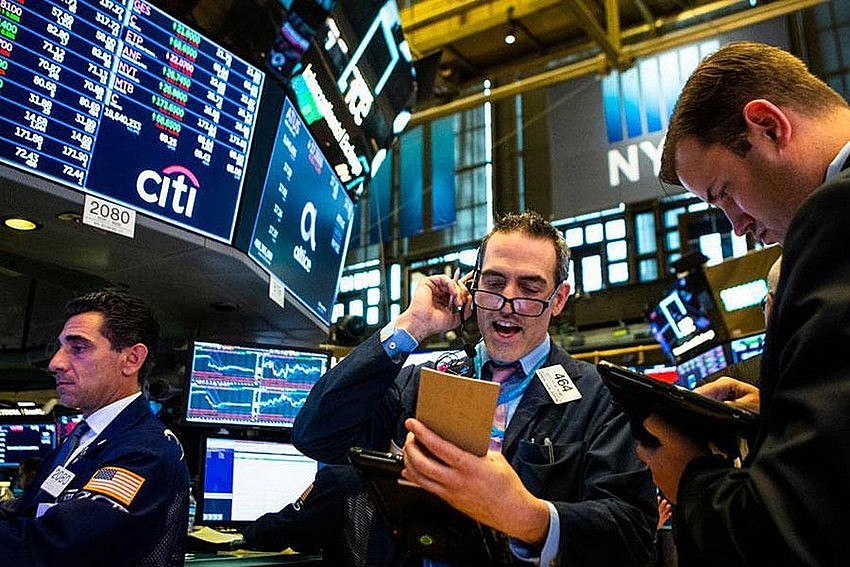2023 World Economy Prediction: Bright Spot in the Recession
 |
| 2023 World Economy Prediction |
The reality is that closer to the end of 2022, the global economy will show more and more ominous signs, however, according to The Wall Street Journal, this situation is not expected to be as serious as many people still worry and more likely. The world is likely to avoid a severe recession next year.
Global Economy 2023: Gloomy and Recession
According to some recent analysis, the outlook for the global economy entering 2023 becomes more bleak as the ongoing war in Ukraine continues to escalate. for trade, especially in Europe and as markets await a fuller reopening of China's economy after months of disruption due to Covid-19. Globally, inflation picked up and business activity, particularly in the euro area and the UK, continued to shrink. In an analysis published on November 24, the Institute of International Finance predicted a global economic growth rate of just 1.2% in 2023, on par with 2009, when the world was just barely growing. beginning to emerge from the financial crisis.
The Organization for Economic Co-operation and Development (OECD) agrees with the bleak forecast. In a report released recently, OECD Chief Economist Alvaro Santos Pereira said the world is currently facing a very difficult economic outlook. The central scenario is not a global recession, but a significant slowdown in growth for the world economy in 2023, as well as inflation that remains high, although has declined in many countries.
In the United States, inflation and the Federal Reserve's efforts to combat it are the dominant factors in most analyzes of the current and future state of the economy. The US experienced its highest inflation in 40 years, with prices starting to rise significantly in mid-2021. At the beginning of 2022, the annual rate was more than 6% and, while fluctuating a bit, hit levels. as high as 6.6% in October.
Starting in March, the central bank's Federal Open Market Committee (FOMC), the body that sets the prime rate, made a series of sharp hikes, lifting the benchmark interest rate from 0.0%. to 0.25% up from 3.75% to 4.0% now.
The idea behind the Fed's moves is to change consumer preferences. By making savings rates more attractive and lending rates less, the central bank is working to reduce demand and thus slow the rate of price growth. In general, the Fed believes a 2% annual inflation rate is healthy and sees that as their long-term goal. The Fed's goal is to control inflation without pushing the economy into a severe recession.
And while some economic signs suggest efforts to slow demand may be working, the threat of a recession still looms. Newly released evidence shows that business activity in the US has shrunk by a record for a fifth straight month as companies react to falling consumer demand.
Although the economy has continued to add jobs in recent months, claims for unemployment benefits are on the rise, suggesting a potentially weakening labor market.
The US Federal Reserve has released the minutes of the FOMC's early November meeting. The minutes showed a pessimistic view among the central bank's staff economists about the US economy in the coming year.
Among the agreed upon comments were that they "see the possibility that the economy will enter a recession at some point in the next year as almost a fundamental possibility". A "significant majority" of the committee's voting members believe it's time to slow the pace of rate hikes, suggesting that the FOMC will pull back on its recent 0.75% hike when it meets in December, possibly raising rates. interest rate by only 0.5%.
Internationally, governments are faced with a daunting challenge: supporting citizens at a time of skyrocketing prices, especially for necessities such as food and fuel, and capital. heavily affected by the war in Ukraine.
In a recent report, the International Monetary Fund pointed to the difficult balancing act that governments must manage, saying: “With many still struggling, governments should continue to prioritize helping the most vulnerable cope with soaring food and energy bills and cover other costs – but governments should also avoid adding to aggregate demand that risks increasing inflation. broadcast. In many advanced and emerging economies, fiscal restraint can reduce inflation while reducing debt.”
According to the Institute of International Finance (IIF), while global growth will be low but net positive in 2023, some specific regions will face a slowdown. Chief among them is Europe, where the IIF forecasts a 2.0% decline in cumulative GDP.
To the extent there are bright spots in the global economy in 2023, located in regions such as Latin America and China.
In many countries in Latin America, where exports of raw materials, including timber, ores, and other key economic inputs drive many economies, global inflation has proved beneficial when the prices of those commodities increase.
The IIF report predicts that GDP across the region will grow by 1.2%, even as much of the rest of the world sees an economic slowdown. China has suffered economic damage as a result of the "zero-Covid" strategy that forced the blockade of entire cities and regions, causing severe disruption to economic activity. The IFF and others expect a significant easing in Chinese policy next year, which will lead to economic growth of up to 2.0% as the Chinese economy tries to recover on its own.
With the exception of Russia, which is still reeling under heavy sanctions related to the war in Ukraine, the UK faces the bleakest outlook for next year of any of the world's largest economies. which gender. With inflation rising significantly faster than in other countries, annual price growth is expected to hit 10% by year-end, before tapering off in 2023.
| Among the G-7 nations, the UK is the only one whose economic output has not yet returned to pre-pandemic levels and is forecast to continue to shrink. The OECD predicts that the UK economy will shrink by 0.3% in 2023 and will grow by only 0.2% in 2024. |
The Bright Spot of the World Economy 2023
Many business surveys released last week showed that economic output in the US and some leading European economies appeared to decline slightly in November. However, several other indicators of other economies This economy is on the rebound despite high inflation and interest rates.
Specifically, according to a report by financial company S&P Global (USA), the US composite output index (including manufacturing and services activities) decreased from 48.2% in October to 46.3%. in November. A reading below 50 indicates a decline in economic activity and a reading above 50 indicates a growing economy.
“Companies are seeing increasing difficulties due to rising costs of living, tightening financial conditions, notably higher borrowing costs and weakening demand in both the domestic and foreign markets. exports," commented Chris Williamson of S&P Global.
However, many US businesses said inflation pressure was somewhat relieved in November as raw material prices and transportation costs fell. In addition, a tight labor market and healthy household balance sheets are providing an important impetus to the recovery.
This has helped retail sales in October in the US increase and is forecast to continue to drive economic growth later this year. The US growth outlook depends in part on how well the US economy weathers interest rate hikes by the US Federal Reserve (Fed) to cool inflation.
In Europe, the economic disruptions caused by the shortage of energy supplies following the sanctions against Russia have eased and are not as severe as many analysts previously feared. European governments are also rolling out financial support packages to households larger than forecast to help people cope with rising food and energy costs. In the euro area, the composite output index was reported at 47.8% in November, up from 47.3% in the previous month.
There are still many challenges ahead
According to The Wall Street Journal, global economic growth is forecast to reach around 2% next year, down significantly from this year and much lower than the pre-pandemic 3.3% average. However, at this rate of growth, economic output per capita will still increase slightly. Experts believe that in 2023, the world economy will not be as negative as many previous opinions, but many challenges are still ahead.
For the US, a big question is how quickly inflation will be controlled. The rate at which inflation cools down will determine how high the Fed will raise interest rates and how long they will stay there. This year, the Fed is tightening monetary policy at a pace not seen since the 1980s. Many economists predict that further hikes in interest rates could weigh on consumer spending in the coming months and threatens the growth of the world's largest economy. The Organization for Economic Co-operation and Development (OECD) predicts US economic output will grow by 0.5% next year, down from an estimate of 1.8% in 2022. A Wall Street Journal survey predicts that US GDP will grow by only 0.4% in 2023.
Europe seems likely to avoid the worst consequences of energy disruptions. The mild October weather and high gas reserves make Europe's factories less likely to face energy savings. The region's GDP is projected to shrink by just 1.3% next year, less than their worst-case scenario of a 5% drop.
However, the biggest challenge right now is that Europe has not completely resolved the energy issue with Russia. Russian state energy corporation Gazprom recently warned that it would restrict the flow of gas to Europe through Ukraine in the near future. This is one of the last remaining gas pipelines from Russia to Europe.
In Asia, the 2023 outlook for China, the world's second-largest economy, is considered relatively worrisome as the country continues to face resurgence of the COVID-19 outbreak. Most experts believe that the country can only recover growth in 2023 when it relaxes the current strict epidemic prevention measures. Related to this, Research Director Magdalene Teo of Julius Baer Bank (Switzerland) noted that: "China is experimenting with adjusting its COVID-19 policy in a more lenient direction as the number of infections increases, especially in manufacturing hubs like Guangzhou.
Many developing economies are also forecast to lag behindWorld Bank (WB) President David Malpass warned that developing countries are likely to face another economic risk: That is, policies to control inflation and economic slowdown in developing economies. economic growth makes them fall into a lack of capital when investment cash flows decrease. |























